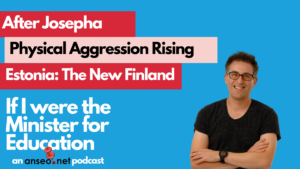 I was asked to write a follow-up article about my workshop at this year’s CESI (Computers in Education Society of Ireland) conference. It’s entitled “Why Blogging is Best” and below is the text from it. The slides are available as a slidecast from the CESI site.
I was asked to write a follow-up article about my workshop at this year’s CESI (Computers in Education Society of Ireland) conference. It’s entitled “Why Blogging is Best” and below is the text from it. The slides are available as a slidecast from the CESI site.
The CESI conference is one of my favourite events of my school calendar year. It’s one of the only events where I leave feeling absolutely invigorated, full of new ideas and motivated by the power of ICT in education. Every year there are excellent talks, workshops and speakers. For the last couple of years, I hope that I add a little drop to that enthusiasm with the workshops I have given. This year, I gave a workshop, entitled: “Why Blogging is Best”. The workshop’s aim was to promote the blog as a primary school’s web site rather than the static model that is outdated and more difficult to use.
Blogs are part of the Web 2.0 phenomenon that have spread to homes around Ireland. Almost every digital native has a social networking page, has expressed an opinion in a forum and some even keep an online diary or personal web site in the form of a blog. So, what is a blog and why are classrooms in Ireland starting to stand up and take notice?
A blog is simply a web site. However, the features of a blog that separate it from a tradtional web site are:
- They are dynamic rather than static. This means that information is archived automatically and when the web site is updated, older updates are moved down the list without the user needing to do anything.
- They are interactive. Most blogs allow users to comment on individual articles.
- They can be updated anywhere. A blog is generally not restricted to one computer. It is possible to update a blog from any computer with an internet connection.
- They are easily searchable. Any article written is automatically searchable. With traditional web site, this is not an automatic feature.
- They are chronological. Articles are posted up in chronological order. If I type an article, it automatically appears at the top of the page and older artilces are “pushed” below.
- A blog can have multiple authors. This means that several people can have access to the web site from any computer if they have a username and password.
- They are generally free. Most blogs are free to use, maintain and run.
- They are very easy to use. Blogs are designed to be easy to use and with only two-three clicks, one can have a fully-functioning web site.
Over the last couple of years blogging has been introduced to primary schools. As with any new system, it has had to defend itself against the perceived norms. Web design has been around in Irish primary schools for around 15 years and all web sites were based on a static model. Whether a school used Frontpage, Dreamweaver, or more recently, WebsiteX5, these packages were often difficult to maintain and usually necessitated that teachers also have some graphic design skills. The latter package mentioned, WebsiteX5, promised users a web site in 5 clicks, and was very well received by many schools. However, blogs are finally becoming recognised as much more effective and easier to use.
Critics (and defenders of the static model) have claimed that the blog is insecure and difficult for the average teacher to use. However, Blogs are very secure and much easier than static packages for the average teacher to use. If I had any doubts, the workshop assured me how wrong these critics were. From the gasps and positive comments, teachers were in disbelief about how easy it all was. Another privilege for me was the fact that I was allowed to use Scoilnet’s blogging service to demonstrate. I would heartedly recommend every school to take up the service by ringing the NCTE helpdesk.




4 thoughts on “Why Blogging is Best – a digiteach article”
Many thanks Simon for your excellent information.
I have one query, I am hoping to move our website from websiteX5 to wordpress blog. I was starting to do this independently of Scoilnet, should I contact Scoilnet and do it through them? Is there a difference? And would we be able to retain our current domain name, as we would prefer to do.
I’m really enjoying your design tips.
Regards,
Bronagh Dixon
Balbriggan Educate Together.
If you are using Scoilnet’s hosting, you can still keep your domain but you’ll have to contact them to allow for a blog. I think you’ll also have to use their templates. If none of this suits, we use Blacknight for our hosting, which we find very good.
Many thanks Simon for your excellent information.
I have one query, I am hoping to move our website from websiteX5 to wordpress blog. I was starting to do this independently of Scoilnet, should I contact Scoilnet and do it through them? Is there a difference? And would we be able to retain our current domain name, as we would prefer to do.
I’m really enjoying your design tips.
Regards,
Bronagh Dixon
Balbriggan Educate Together.
If you are using Scoilnet’s hosting, you can still keep your domain but you’ll have to contact them to allow for a blog. I think you’ll also have to use their templates. If none of this suits, we use Blacknight for our hosting, which we find very good.
Comments are closed.